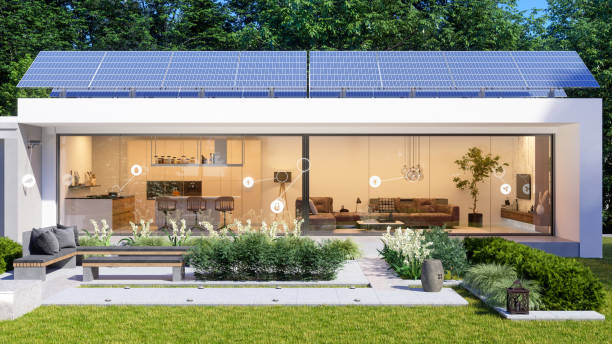
The discussion about Smart Homes may be familiar to some people. Still, because the integration of technologies is not always immediate, It’s worthwhile to consider the definition of a Smart Home and how you should approach your personal Smart Home project. If you want assistance creating your own solar-powered Smart Home, we can provide no-cost consultations with our energy experts.
While considering the many elements that make up your ideal Smart Home, feel the energy use of every detail you put together. In particular, as your usage grows in the seasons, you’ll need to be ready to manage your home’s heating during winter and the cooling of your house in summer!
Overall, the IoT ( Internet of Things) capable Smart Home requires a lot of energy to run, and where the power originates from must be part of the discussion. If we want to build an environmentally sustainable design for an IoT-enabled Smart Home, it’s time to bring solar power. Let’s look at the most commonly used components of a Smart Home and think about ways to get them all together effectively, efficiently, and cleanly.
What is a Smart Home?
What can a Smart Home be? The basic idea of a “Smart Home” is a home stocked with appliances and other products built with comfort and connectivity in mind. They should serve an important role but also benefit homeowners through access to information and the ability to control functionality.
We’ve made a significant leap from home-style luxuries like the clapper. In the Smart Home age, you can control your appliances’ functions via smartphone or voice.
Suppose you take a few intelligent steps regarding setting up your appliances. In that case, your home can seamlessly incorporate new pieces of technology and let them be integrated to make life easier and more efficient. There are many aspects to take into consideration when switching your existing setup to intelligent appliances since there are a lot of businesses that have invested in this technology.
You’ll need to choose what pieces work best together and build an entire system using the most effective components. The process of making the top-of-the-line Smart Home is not unlike the process of creating an elite solar home. However, we’ll talk about how to connect these components shortly. In the meantime, let’s talk about technology.
Smart Home Standards
A few of you may have gone through this guide and have a good understanding of aspects of Smart Home basics. Still, before we discuss the role of solar power in the current Smart Home, we wanted to create an equal playing field to understand Smart Home technology better.
The number of technology components you could combine into a complete Smart Home package makes it hard to figure out what to do. But that’s the place we can help! In this article, we’ll walk through each room and examine the top upgrades you can make to Your Smart Home. Whether you’re a tech user or prefer to be a cautious buyer, we’ll list the services and products that will benefit the most from your Smart Home journey.
Smart Hubs
Let’s start with a Smart Home hub, like Apple Home or Alexa, which will be the central control point for your newest gadgets. Many devices will not be able to connect to the Smart Home hub. Still, some in the industry are pushing for the development of a standard technology universally applicable to every Smart Home tech, enabling more accessible integration and control of every device in a system.
At present, a Smart Home hub is an excellent option to set the tone and feel of your Smart Home system, which is connected and integrated technology controlled by voice commands. You can issue instructions to any devices on your network and ask questions to an internet-connected AI system, which will give you answers.
